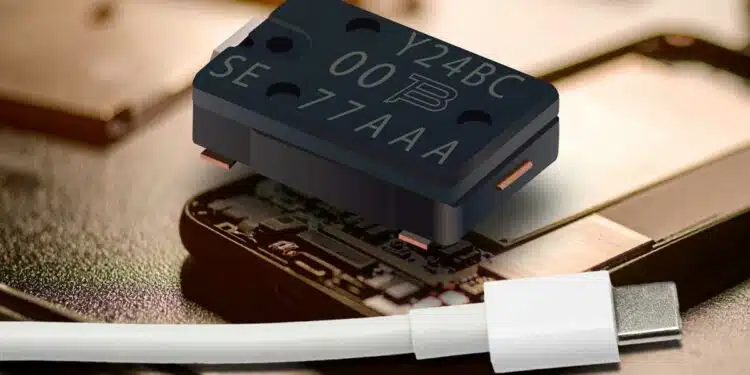Bourns introduces miniature thermal cutoff (TCO) mini-breaker device series that supports new 240 watt usb power delivery standard limit.
Bourns releases its smallest surface mount 54 Volt miniature thermal cutoff over-temperature protection device.
Bourns, Inc., a leading manufacturer and supplier of electronic components for power, protection, and sensing solutions, today introduced its SE Series miniature Thermal Cutoff (TCO) Mini-Breaker devices that are designed to support 240 W, which meets the upper limit of the USB Power Delivery (PD) standard. The SE Series is Bourns® smallest 54 V surface mount Mini-Breaker, with a footprint size of 4.7 mm x 2.8 mm and a height of only 1.23 mm.
The growth in usage of USB fast charging and higher power cables is expected to accelerate globally. Furthermore, the Common Charger Directive, which was applied in the European Union in 2024, requiring mobile phones, tablets, headphones and other personal electronics to be equipped with a USB-C connector. A known downside to fast charging is that it can increase the risk of heat generation from connector ingress situations.
An effective over-temperature remedy that can be installed right on the Type-C connector, the new series is capable of virtually instantaneously detecting heat generation above preset limits and interrupts the current to directly shut off the power line.
This capability also eliminates the need for additional ICs or other switches helping customers to reduce a design’s component count. The series also supports the higher levels of over-temperature and over-current protection necessary for fast charging where the various models in the SE Series feature temperature settings ranging from 72 °C to 85 °C, each with a ±5 °C tolerance range.
Features
- Miniature Thermal Cutoff (TCO) device
- Surface mount, smallest footprint
- Over-temperature and over-current protection
- Controls abnormal, excessive current virtually instantaneously, up to rated limits
- Wide range of temperature options
- High corrosion resistance
- Supports USB PD 240 W (48 V / 5 A) specification
- RoHS compliant
- Halogen free
Applications
- Overtemperature protection for:
- USB Type C cables (e.g., smartphones and notebooks, max. 240 W)
- Electronic cigarettes
- Heaters
- Battery cell protection for:
- Wearables
- Portable equipment
































